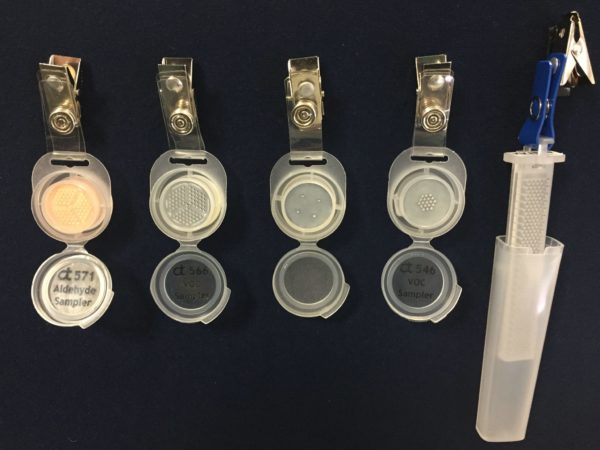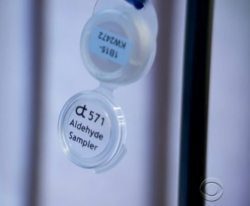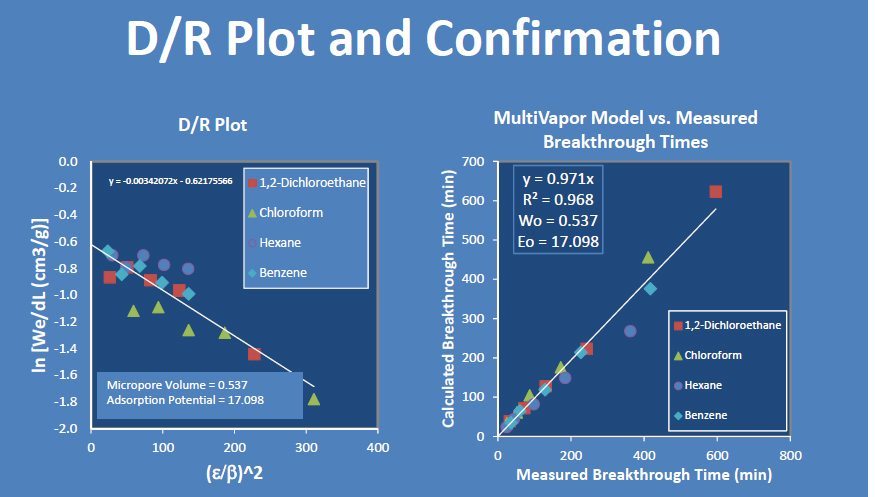
Functional Range
Assay Technology badges are primarily designed for OSHA compliance sampling. Since OSHA has Short Term Exposure Limits (STEL, 15 minutes) and Permissible Exposure Limits (PEL/TWA, 8 hours), we design monitors that work best in the 15 minute to 8 hour range.
Here’s an example, from one of our technical inserts:
Recommended Sampling Time:
- STEL = 15 min
- PEL = 8 hours
- Functional Range: 15 min – 12 hours
Any time we make a recommendation, customers call and ask if it’s OK to go outside the recommendation. Some common questions are:
- Will the badge work if I use it for 10 minutes?
- Will the badge work if I use it for 5 days?
- Will it work for thirty days?
Good questions, but the answer is rarely a definitive yes or no. Still, we are scientists. We can reason it out:

Shorter than 15 minutes
For customers that want to use our badges for less than 15 minutes, I tell them the badges will “work.” However, there are some concepts to keep in mind:
- The reporting limit for 15 minute monitoring can already be very close to the STEL. For example, if you use a 566 badge for benzene, the STEL reporting limit is 0.9 ppm while the STEL is 5 ppm. So if you monitor for only 5 minutes, the reporting limit (RL) will be about 3 ppm, more than half the STEL. The closer your result is to the reporting limit, the uncertainty of the result rises, which can have a significant effect on your results. But, if the RL is below the STEL and your result is “None Detected,” the data should be quite usable.
- For the most part, air is pretty heterogeneous. If I put a bucket of formaldehyde in big room, it would smell really awful next to the bucket, and it would get more tolerable as I walked away. If you monitored only 5 minutes, it would be very unlikely you could get good average concentration for the work environment. The longer you wear the badge, the more accurate your result will be (except, see below).
- If you sample a really short period of time, the accuracy of the sampling times gets to be significant. For example, if a customer monitors for 8 minutes and 30 seconds, but writes down 8 minutes, that’s already a 6% error. But, if you make that same error at 15 minutes, that’s only a 3% error.
So, even with a 5 to 10 minute monitoring, the badge will do fine if:
- the reporting limit is well below the STEL,
- the air in the area is homogeneous (picture a room with fans circulating the air),
- and the sampling time recording is spot on.

Sampling longer than recommended
Customers also want to sample for longer than we recommend. Common inquiries are 24 hours, two days, 5 days, etc. Keep in mind, we are making educated extrapolations based on the information you have provided and what we know about the chemicals and badges, so there are many cases in which we believe you will still get good data and a few that will probably give biased low data.
GOOD
For example, if you wanted to monitor for formaldehyde using a 571 badge for one week, I would say the results will likely be just fine. The formaldehyde should be stable all week. It reacts with a chemical on the badge and creates a very stable solid.
PROBABLY OK
However, the results could be biased low if the capacity of the badge was exceeded. It’s hard to know if that will happen or not until after you get the result. Still, we have seen many 571 badges used to monitor for formaldehyde in an indoor air quality (IAQ) study that were nowhere near the capacity of the badge.
PROBABLY BIASED LOW
Using a TraceAir II badge (525/521) to monitor for a gas like 1,3-butadiene all week is probably not very good. Because 1,3-butadiene, like all chemicals collected on charcoal, is not tightly bound to the media, chemicals with lower boiling points (butadiene, vinyl chloride, etc.) are more prone to reverse diffusion, which means a percentage of the chemical on the media can escape the charcoal and be lost. The butadiene collected at the beginning of the week would have a long time to reverse diffuse back off the badge, which would give you a low bias.
LIKELY GOOD
However, if the badges are being used to monitor for bigger molecules, like xylenes, TCE, or 1,3,5-trimethylbenzene, the results will likely be fine.
Someone reading this will likely call us and ask: How about ethanol on a 525 for 3 days in Houston during the summer in a warehouse that is not temperature controlled? My best advice is to follow our recommendations. Swap badges and average the results.

Final thoughts
Generally when customers call, they conservatively believe that, if the functional range of the badge is 15 to 480 minutes, then:
- From 0 to 14.99 minutes: badge doesn’t work
- From 15 to 480 minutes: badge works
- From 481 minutes to forever: badge doesn’t work
The customers calling are safety officers and are paid to be conservative. In actuality, it’s more like:
- 0 to 14.99 minutes: Less accurate, reporting limit may be too high
- 15 to 480 minutes: Accurate
- 481 minutes to forever: Could be more or less accurate, depends on the badge and chemical.
Give us a call if you want to discuss your situation. We will nudge you towards the recommended sampling times. But, when it’s not possible, we can review what we know and help you develop a plan.